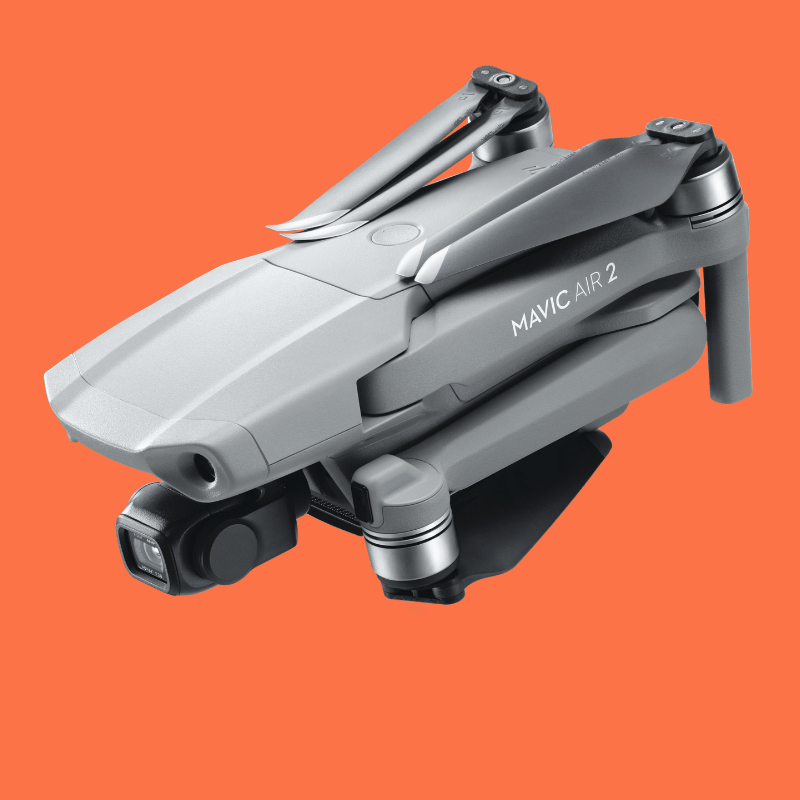
Products
DJI Mavic Air 2 v Mavic 2 v Mavic Mini v Mavic Air
A DJI Mavic series comparison. Which drone is best? An in-depth look at the Mavic Air 2, Mavic 2 Pro, Mavic 2 Zoom, Mavic Mini, and the original Mavic Air. ... Read More

The eagerly-anticipated DJI Mavic Air 2 is here!
As its name suggests, it is the latest iteration in the popular Mavic Series.
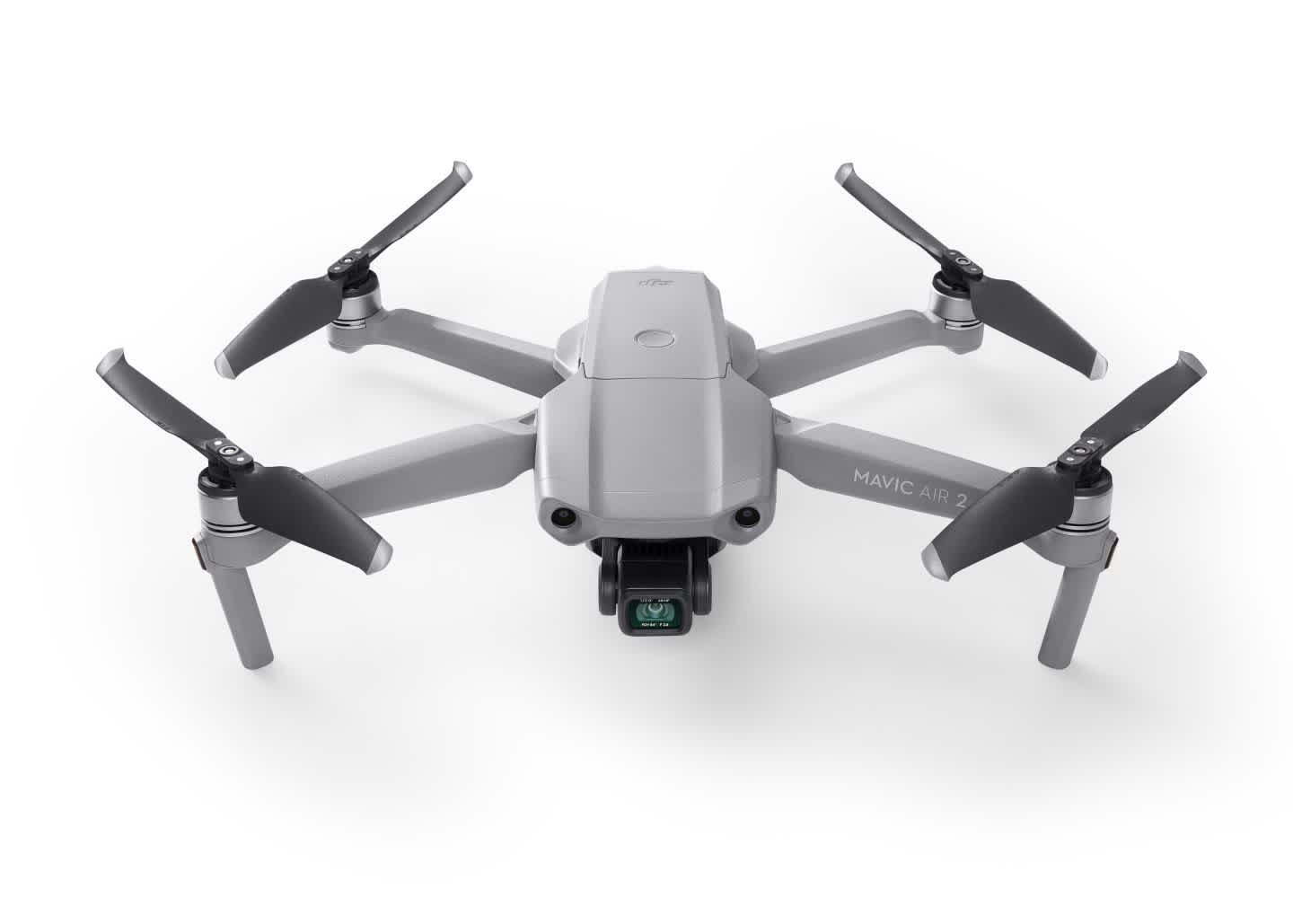
The DJI Mavic Air 2.
So, with the Mavic Air 2 being the newest member of this iconic drone family, how does it compare to its older siblings?
Heliguy Insider takes a look at the key features and specifications of this newbie, alongside the Mavic Mini, Mavic 2 Pro, Mavic 2 Zoom, and the original Mavic Air, to help you decide which aircraft best suits your needs.
mavic-versus-15-700x496.jpg
mavic-versus-14-700x467.jpg
mavic-versus-16-700x418.jpg
DJI Mavic Air 2 v Mavic 2 v Mavic Mini v Mavic Air – Key Specifications
First of all, let's take a quick look at some of the key specifications between the five different Mavics.
Mavic Air 2 | Mavic Mini | Mavic 2 Pro | Mavic 2 Zoom | Mavic Air | |
Take-off Weight | 570g | 249g | 907g | 905g | 403g |
Dimensions | Folded: 180mm x 97mm x 84mm Unfolded: 183mm x 253mm x 77mm | Folded: 140mm x 82mm x 57mm Unfolded: 160mm x 202mm x 55mm | Folded: 214mm x 91mm x 84mm Unfolded: 322mm x 242mm x 84mm | Folded: 214mm x 91mm x 84mm Unfolded: 322mm x 242mm x 84mm | Folded: 168mm x 83mm x 49mm Unfolded: 168mm x 184mm x 64mm |
Max Speed (S-Mode) | 68kph/ 42.2mph | 46.8kph / 29mph | 72kph / 44.7mph | 72kph / 44.7mph | 68.4kph / 42.5mph |
Max Flight Time | 34 mins | 30 mins | 31 mins | 31 mins | 21 mins |
Camera | 1/2" CMOS 48MP | 1/2.3″ CMOS 12MP | 1″ CMOS 20MP | 1/2.3″ CMOS 12MP | 1/2.3″ CMOS 12MP |
Max Video Resolution | 4k/60fps | 2.7k/30 fps | 4K/30fps | 4K/30fps | 4K/30fps |
Internal Storage | 8GB | N/A | 8GB | 8GB | 8GB |
Sensing | Forwards / backwards / downwards. | Downwards | Omnidirectional | Omnidirectional | Forwards / backwards / downwards |
Price | £769 | £369 | £1,305 | £1,077 | £709 |
DJI Mavic Air 2 v Mavic 2 v Mavic Mini v Mavic Air – Appearance
If there is one thing that has made the Mavic series truly iconic, it's appearance.
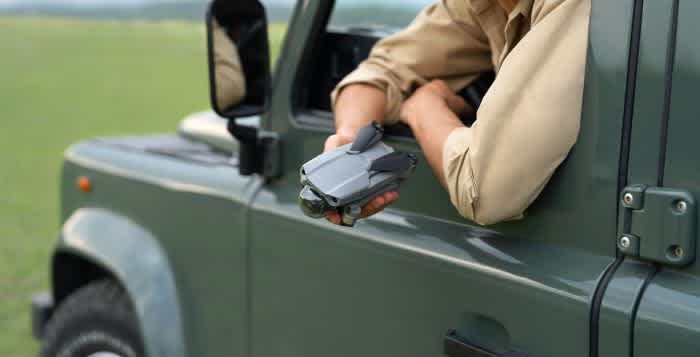
The DJI Mavic Air 2 has a recognisable appearance.
They say that size doesn't matter, but when it comes to the Mavics, size is everything!
These members of the Mavic family have become synonymous for their compact, foldable, and lightweight form, making them easily transportable. In fact, their tiny frames are one of their greatest assets.
This was taken to a whole new level with last year's release of the Mavic Mini, which shrunk the typical Mavic shape to a teeny 249g - almost four times lighter than the Mavic 2 Pro and Zoom.
The Mavic 2 Air is in between, tipping the scales at 570g, which makes it heavier than the original Mavic Air, at 403g. But make no mistake, the Mavic Air 2 is still a lightweight, portable option, especially when you consider its dimensions (folded, 180mm x 97mm x 84mm; unfolded, 183mm x 253mm x 77mm).
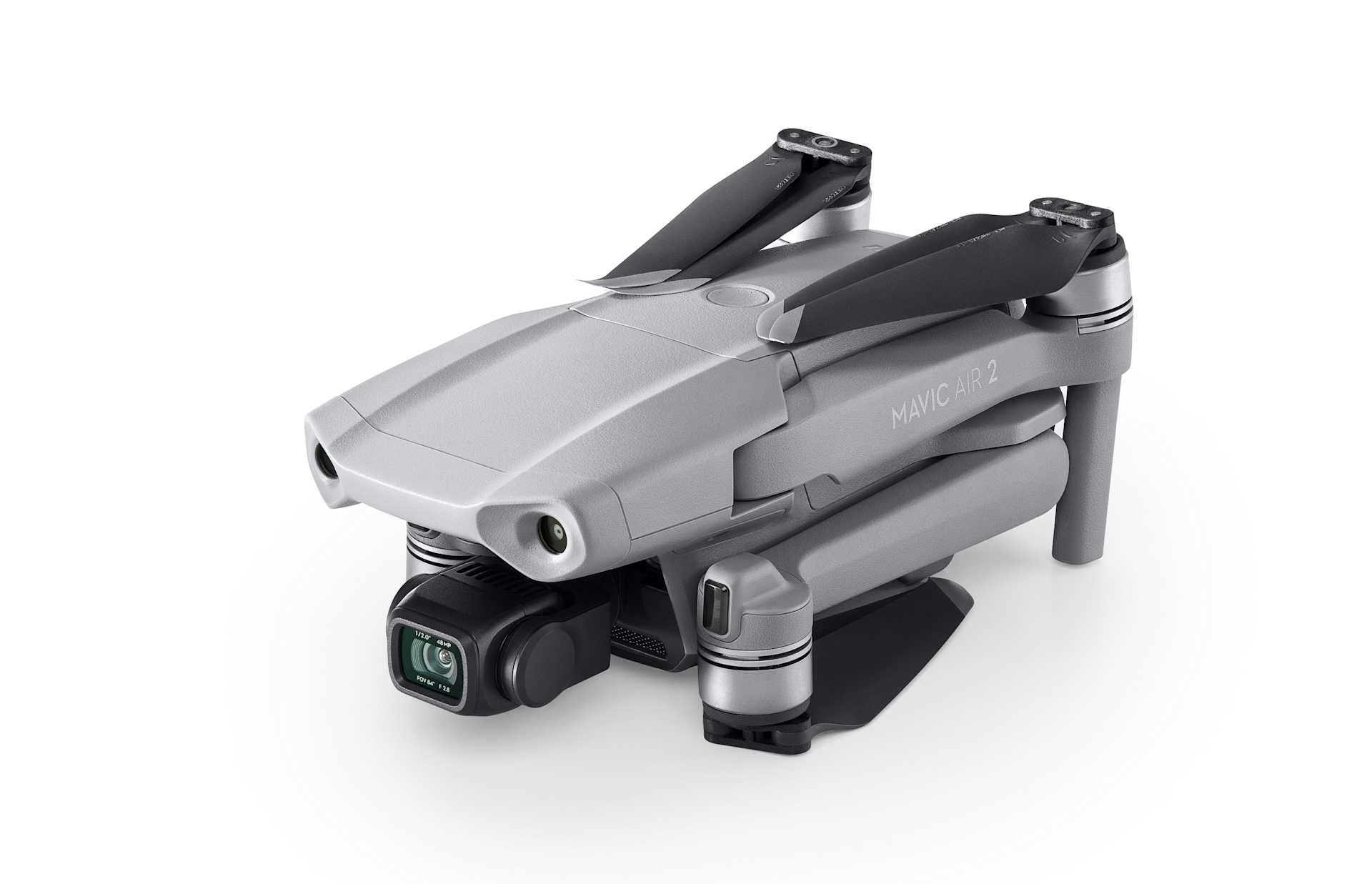
Like other Mavics before it, the Mavic Air 2 can be folded.
In terms of appearance, the Mavic Air 2 is near-identical to the Mavic Mini, and Mavic 2 Series. It seems as though DJI has settled on this winning design, with all of its latter Mavic drones boasting this iconic shape and familiar grey housing.
In contrast, the Mavic Air looks a tad dated with its vastly different look, with its more rounded shell which looks bulkier and harder than the later iterations.
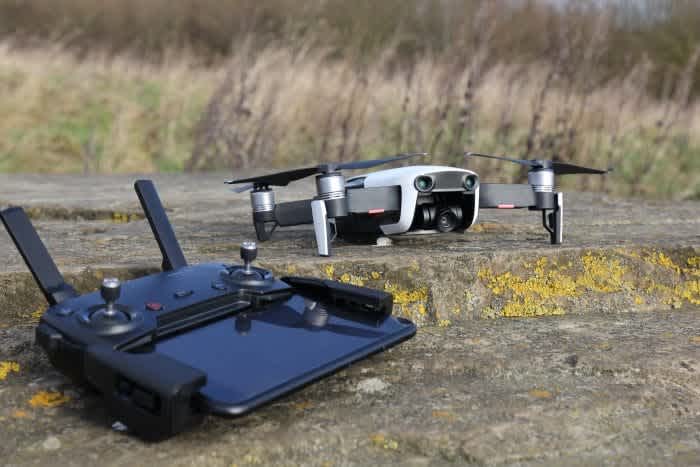
The original Mavic Air looks a bit dated now.
DJI Mavic Air 2 v Mavic 2 v Mavic Mini v Mavic Air – Price
Tempting and competitive. That is how we would describe the price of the Mavic Air 2, which has come to market at a really reasonable £769.
To put that into perspective, that's the same price as the Mavic Air when it launched at the start of 2018, but this new-release aircraft has vastly superior specs than its predecessor.
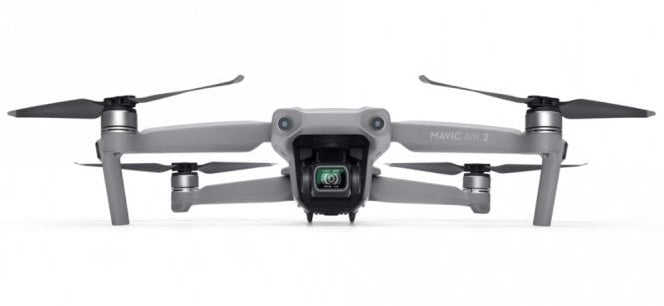
The DJI Mavic Air 2 is priced £769.
More on specs later, but with highlights such as the ability to capture 48MP images and shoot 4K/60fps video, the £769 price tag for such a capable drone is seriously good.
Yes, it is more expensive than the Mavic Mini (£349), but last year's release lacks features like 4K video and object tracking.
At the other end of the spectrum, the Mavic Air 2 is cheaper than the Mavic 2 Pro (£1,305) and Zoom (£1,077), which makes it a very appealing proposition.
As well as the single units, there are the combos to throw into the mix, to help take your flights further.
The Mavic Air 2 Fly More Combo is £949, compared to the Mavic Mini's £459, and the Air's £849.
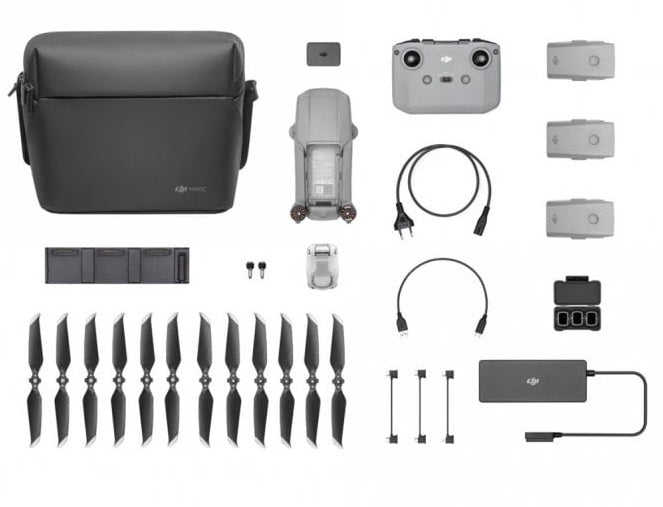
The Mavic Air 2 Fly More Combo, priced £949.
There are several bolt-ons for the Mavic 2 Pro and Zoom, including the Fly More Kit priced £279.
The Mavic 2 Pro with Smart Controller is £1,779, while the drone with the Racing Edition Goggles is £1,798.
The Mavic 2 Zoom with Smart Controller is £1,559, and the Racing Edition Goggles combo is £1,548.
DJI Mavic Air 2 v Mavic 2 v Mavic Mini v Mavic Air – Camera
One of the things which has made the Mavic 2 Series legendary is its cameras, and let's face it, the quality of the sensor is a vital consideration when choosing your drone.
And DJI has packed the Mavic Air 2 with some outstanding assets which should impress drone pilots.
Among its standout features, this newbie can capture 48MP photos, 4K/60fps video, and 8K Hyperlapse - a brand-new feature that gives you the ability to transform time and movement in your shot. The Mavic Air 2 can also capture slow-motion video up to 240fps at 1080p - a feature not found on the flagship Mavic 2 models.
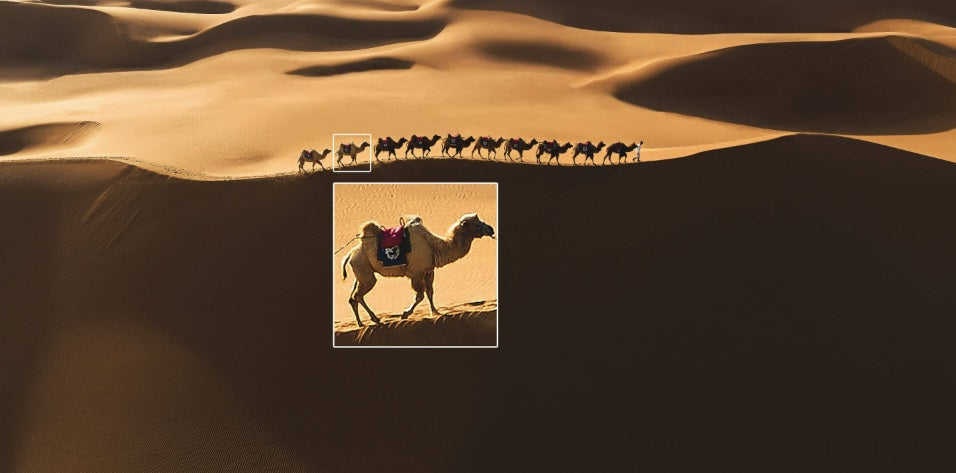
The 48MP camera supports a high megapixel count that allows for vivid details even when you zoom in on an image.
The Mavic Air 2 houses a 1/2-inch image sensor and this newest drone in the Mavic series is supported by Quad Bayer technology, providing advanced sensor architecture for exceptional details.
The drone also benefits from SmartPhoto (12MP images), which integrates HDR, HyperLight, and scene recognition for perfectly optimised capture, making the Mavic Air 2 an ideal drone for aerial photographers.
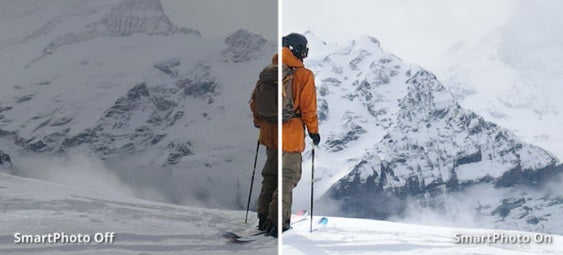
SmartPhoto helps to capture quality content.
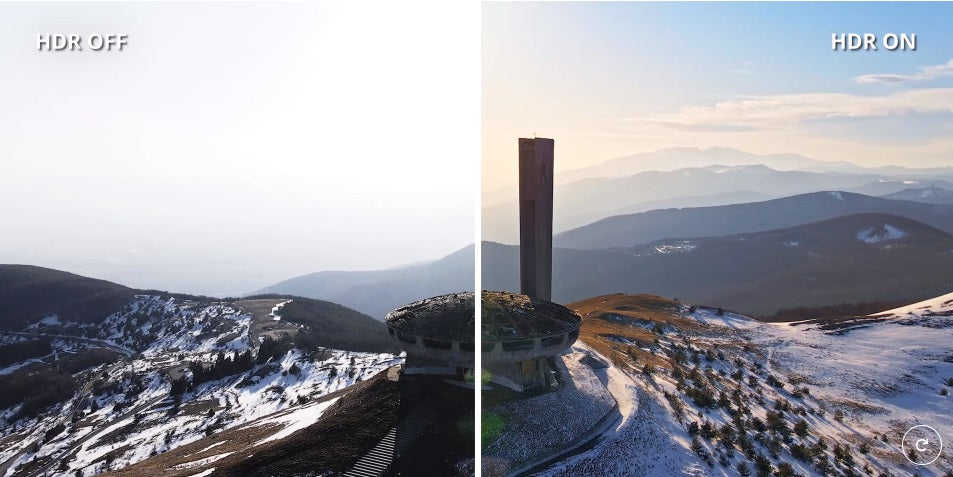
HDR can make a big difference to your images.
In terms of other stats, the Mavic Air 2 has an FOV of 84°, and an f/2.8 aperture, while its ISO for 12MP images is 100-3200 (Auto)/100-6400 (Manual), and for 48MPs it is 100-1600 (Auto)/100-3200 (Manual).
With this in mind, how do the other Mavic drones stack up?
The Mavic 2 Pro is still an incredible photography drone, thanks to its top-class L1D-20c Hasselblad camera which has a one-inch CMOS sensor capable of capturing truly stunning 20MP images.
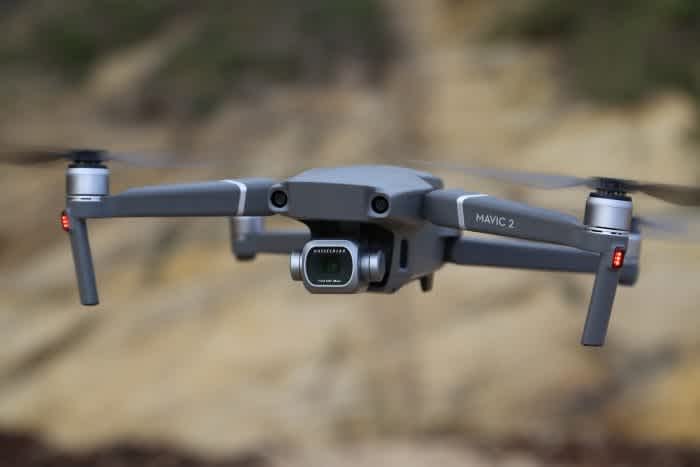
The DJI Mavic 2 Pro benefits from a Hasselblad camera with one-inch CMOS sensor.
In terms of the ISO range, the Mavic 2 Pro can stretch from 100-3200 (auto) and from 100 to a massive 12,800 in manual, while its adjustable aperture of f/2.8-f/11 is a huge advantage.
As for the others, the Mavic Mini, Mavic 2 Zoom, and original Mavic Air all have a smaller 1/2.3-inch sensor.
The Mavic 2 Zoom does benefit from a 24-48 mm Optical Zoom Camera. The 4x zoom with a 2x optical zoom allows you to get close to the subject from a safe distance.
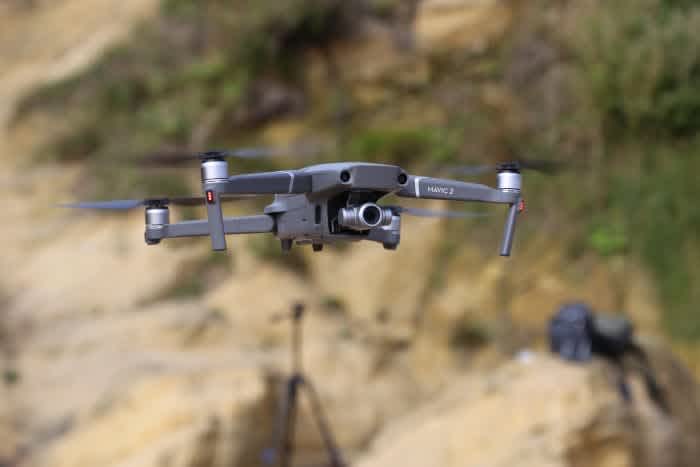
As its name suggests, the DJI Mavic 2 Zoom has a quality zoom camera.
Also, when taking a picture with a 24mm equivalent field-of-view, the camera on the Mavic 2 Zoom will capture and patch nine photos with its telephoto lens, resulting in a 48-megapixel super resolution photo.
Mavic Mini, Mavic 2 Zoom and the Mavic Air have identical ISO photographic capabilities, ranging from 100-3200 in auto and 100-3200 in manual.
The Mavic 2 Zoom has an aperture range of f2.8-f3.8, while the Mavic Mini and Mavic Air have an f2.8 aperture.
When it comes to video, the Mavic Air 2 really impresses with the 4K/60fps. This is compared to the 4K/30fps of the Mavic 2 Pro, Mavic 2 Zoom, and Mavic Air, while the Mavic Mini's maximum video resolution ia 2.7K/30fps.
The Mavic Mini also tops out at 40Mbps, while the Mavic 2 Pro, Mavic 2 Zoom, and the Mavic Air can achieve 100Mbps. In comparison, the Mavic Air 2 has a bitrate of 120Mbps.
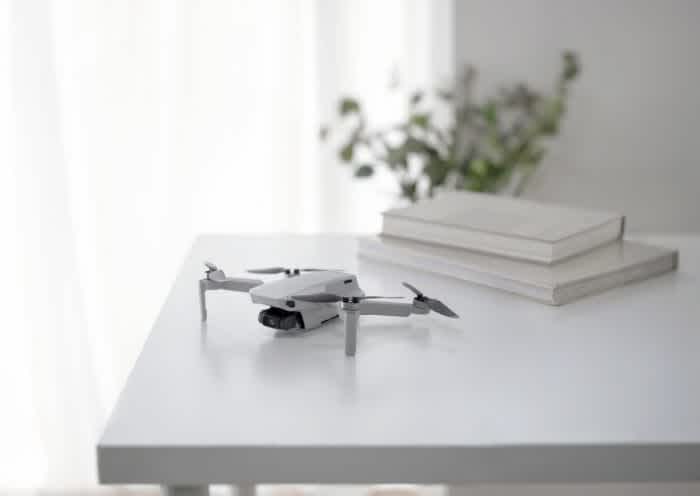
The DI Mavic Mini was groundbreaking when it was launched last year.
All five Mavic drones benefit from a three-axis gimbal, ensuring smooth footage/images.
DJI Mavic Air 2 v Mavic 2 v Mavic Mini v Mavic Air – Intelligent Features
DJI Mavic Air 2 boasts a suite of intelligent tracking modes through FocusTrack to help you unleash your creativity easier than ever before.
First of all, the drone has ActiveTrack 3.0, which DJI says is greatly improved compared to ActiveTrack 2.0 - which the Mavic 2 Pro and Zoom have.
With ActiveTrack 3.0, overall tracking capabilities have improved greatly and re-establishing tracking after the subject has been lost is faster than ever, all while actively avoiding obstacles.

Thanks to ActiveTrack 3.0, the drone's tracking capabilities have been improved.
To aid your aerial photography, the Mavic Air 2 also has Spotlight 2.0 - meaning you can fly freely while the camera remains locked on your subject.
The Mavic Air 2 also has POI 3.0 - again, another upgrade to the POI 2.0 system on the Mavic 2 Pro and Zoom. Where POI 2.0 might lose the target while tracking, this improved feature does not. POI 3.0 is now also able to dynamically track objects like people, cars, and boats.
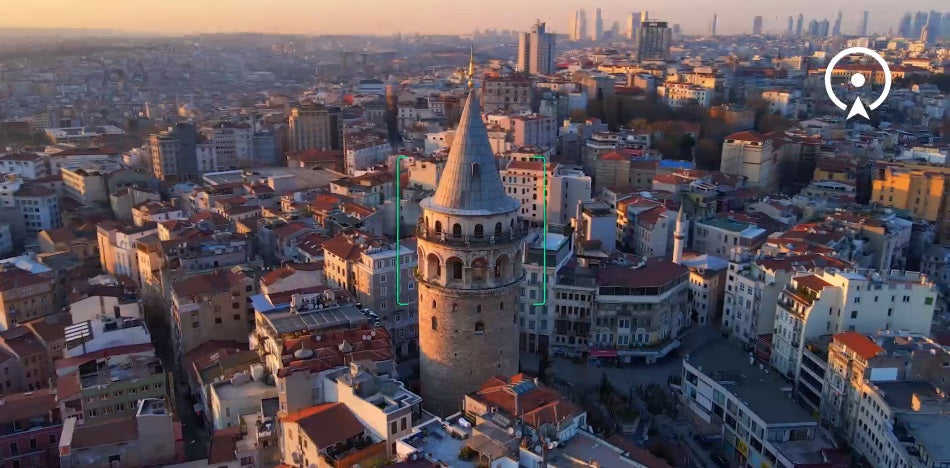
The POI feature on the DJI Mavic Air 2 has been upgraded.
8K Hyperlapse is another impressive feature on the DJI Mavic Air 2, allowing you to warp time and space for incredible footage.
As per the other Mavic drones, the Mavic Air 2 also has the familiar QuickShots, with various options such as Dronie, Circle, Helix, Rocket, Boomerang and Asteroid.
In comparison, the Mavic Mini does not have object tracking. It does have QuickShot modes, while CineSmooth Mode allows you to slow down the drone's flight speed and movements, and interval mode gives you more time to prepare for a selfie.
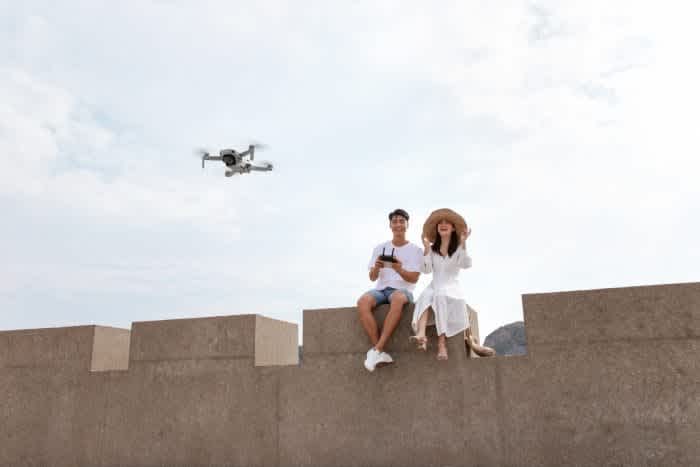
The DJI Mavic Mini has some cool features.
The Mavic Air has an older version of ActiveTrack mode. It also has QuickShots, while SmartCapture allows you to launch and control your drone with hand gestures, and TapFly lets you fly wherever you tap on your mobile device screen.

TapFly is a cool feature of the DJI Mavic Air.
The Mavic 2 Pro and Zoom pack a whole host of intelligent flight features, such as QuickShots, as well as:
HyperLapse: The aircraft shoots stable aerial shots and processes them automatically, enabling you to create professional-looking timelapses with a simple tap of a button, which you can share to social media immediately
HyperLight: A low-light setting designed to enhance your images while reducing noise significantly.
ActiveTrack 2.0: Features such as precise recognition, high-speed tracking and obstacle sensing.
Panoramas: The Mavic 2 supports four panorama modes including Sphere, 180°, Horizontal, and Vertical.
Intuitive Shooting Modes: These include Point of Interest 2.0, Waypoint 2.0 and Dolly Zoom (Mavic 2 Zoom only).
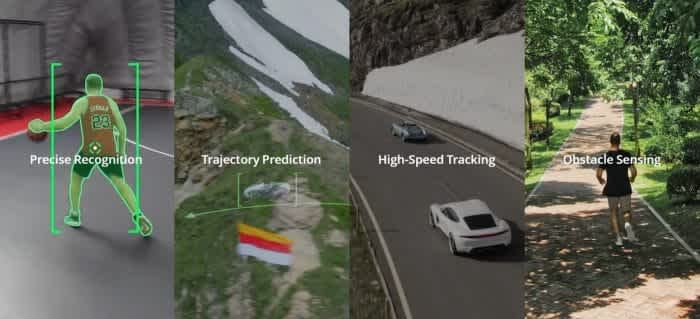
The ActiveTrack 2.0 features on the DJI Mavic 2 Pro and Zoom.
However, it must be remembered that the Mavic Air 2 has upgraded ActiveTrack and POI modes, compared to the Mavic 2 Series, and that the Mavic Air 2 has DJI’s most advanced panorama mode, with a higher dynamic range and colours that are vivid and incredibly accurate.

The panorama mode with the DJI Mavic Air 2 is incredible.
DJI Mavic Air 2 v Mavic 2 v Mavic Mini v Mavic Air – Performance
Another important consideration when selecting your drone is performance.
One of the most impressive aspects of the Mavic Air 2 is its battery life, with an incredible endurance of up to 34 minutes. This is seriously impressive and is a record for the Mavic series.
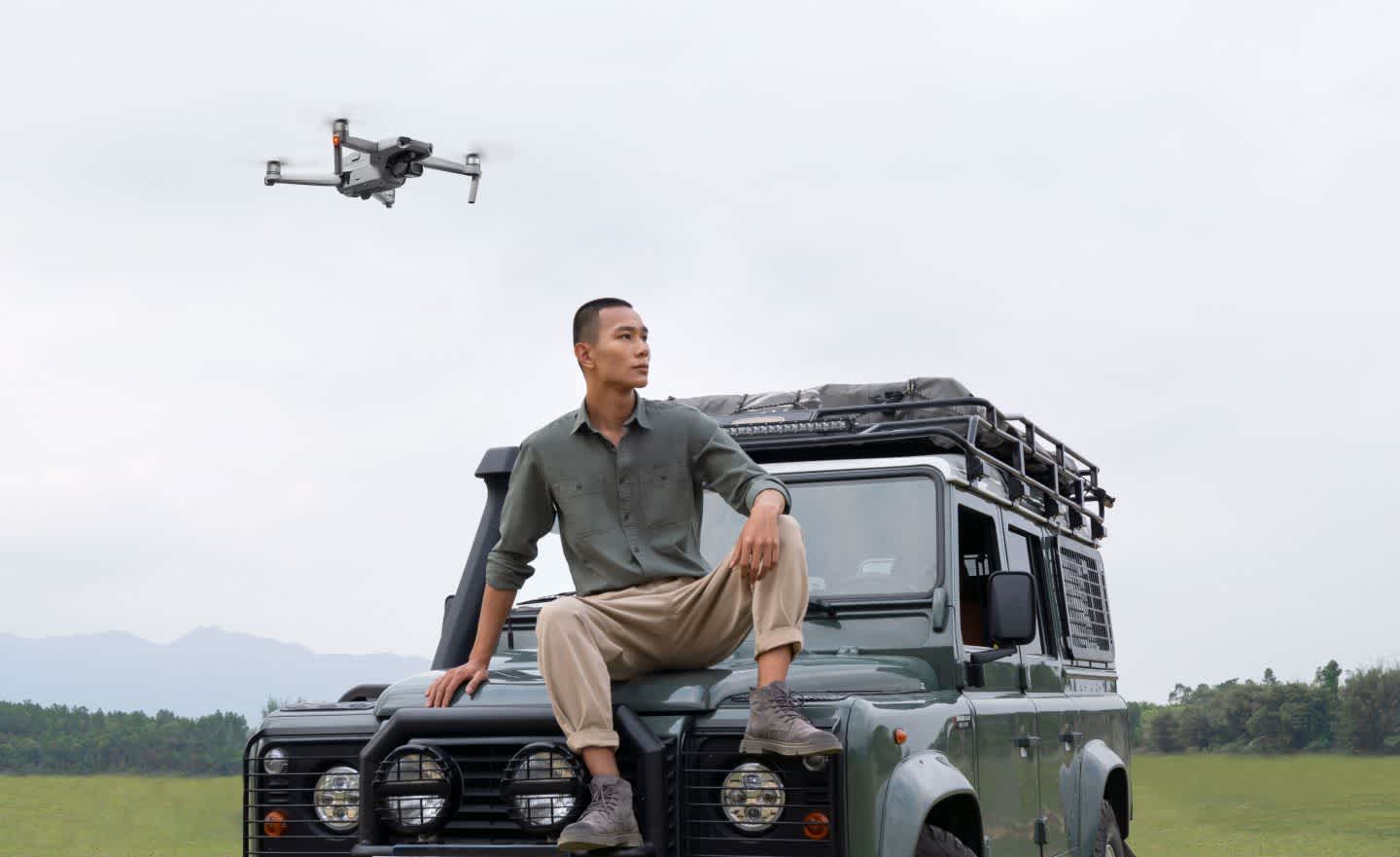
Enjoy longer flight time with the DJI Mavic Air 2.
This smashes the Mavic Air's 21 minutes out of the park. It also provides slightly longer air time than the Mavic 2 Pro and Zoom (31 minutes), as well as the Mini (30 minutes).
If the Mavic Air 2 is something of a Mo Farah, how does its speed compare?
In S-Mode, the Mavic Air 2 is certainly no slouch, with a top speed of just over 42mph (68kph). It is on par with the original Mavic Air, quicker than the Mavic Mini - which can max out at 46.8kph/29mph in S-Mode - but is slightly slower than the Mavic 2 Pro and Mavic 2 Zoom (both 72kph/44.7mph in S-Mode).
The Mavic Air 2, Mavic 2 Pro, Mavic 2 Zoom and Mavic Air all have 8GB internal storage, and support microSD cards, while the Mavic Mini only supports microSD cards.
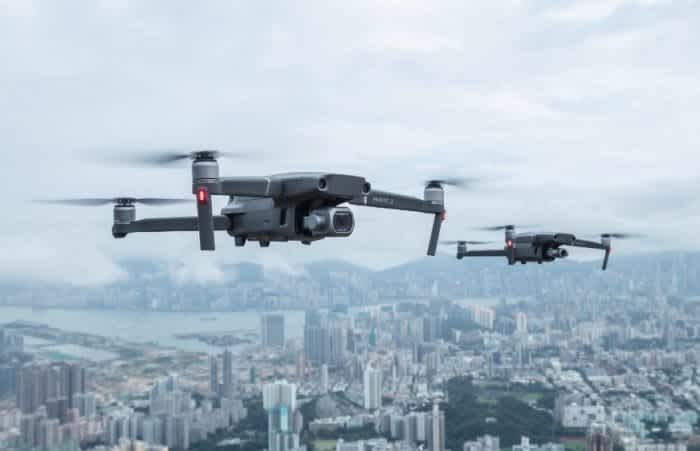
The DJI Mavic 2 drones.
The Mavic 2 Pro, Mavic 2 Zoom and the Mavic Air all utilise the DJI GO 4 app, while the Mavic Air 2 uses the new DJI Fly app, which was first introduced with the Mavic Mini. This new app boasts a cleaner and new user-friendly UI (user interface) design and a new editor with creator templates which lets you edit videos and quickly create and share your videos.
When it comes to safety and flight sensing systems, the Mavic Air 2 is DJI's safest drone.
First off, it has APAS 3.0, which has been dramatically improved compared to previous generations. The system generates a real-time map of its surroundings and currently offers the best obstacle avoidance available on a DJI aircraft.
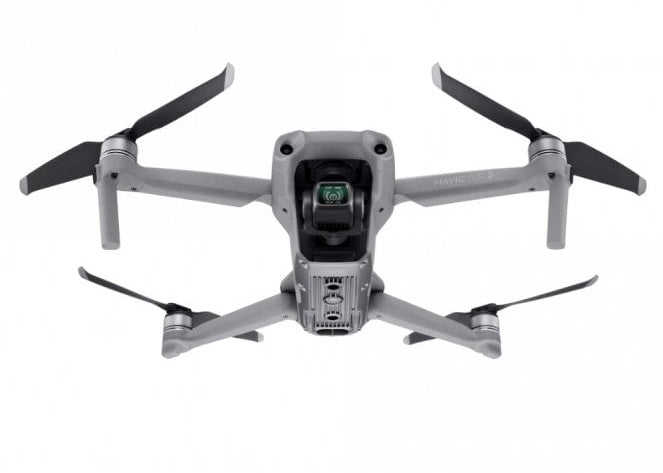
To enhance flight safety, DJI Mavic Air 2 benefits from three-way directional sensing (forward, backward, and downward). The drone has an auxiliary light to improve visibility, assist with positioning, and help with a safe landing.
DJI Mavic Air 2 benefits from OcuSync 2.0, giving a video transmission distance of up to 10km (or 6km, CE) and delivers a 1080p FHD resolution live stream directly from the drone's camera.
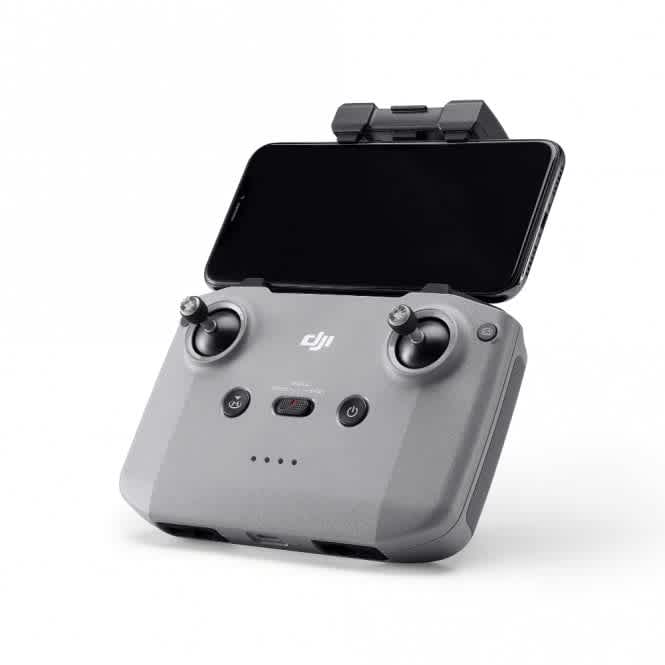
The DJI Mavic Air 2's newly-designed remote controller, which has a long battery life of 240 minutes.
In comparison, the Mavic 2 Zoom and Mavic 2 Pro have comprehensive omnidirectional obstacle sensing (ie, left/right, up/down, and forward/backward), the Mavic Air has three-way directional environment sensing (forward, backward and downward) and the Mavic Mini has downward sensing, which helps to ensure safe and stable hovering.
In terms of transmission, the Mavic Air 2 blows its predecessor out of the water. The Mavic Mini achieves up to 4km HD video transmission – for clarity, 4km relates to American models, while the distance is up to 2km in Europe (CE compliant). In contrast, the Mavic 2 Pro and the Mavic 2 Zoom have 1080p from up to 8km (FCC, or 5km, CE).
When it comes to safety, the Mavic Mini can be flown with a 360° prop guard, which offers full protection to your propellers.
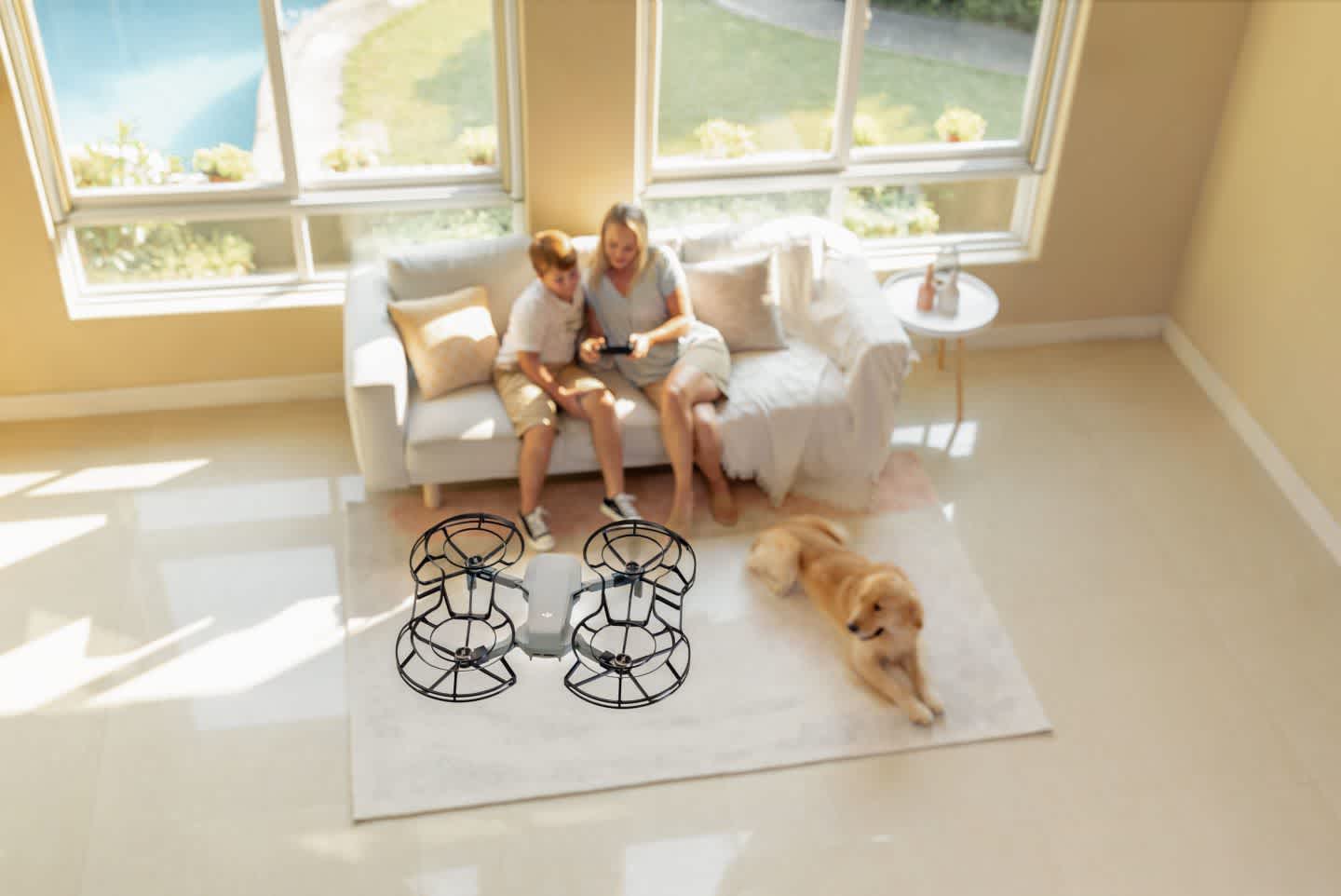
The DJI Mavic Mini has 360° prop guards.
Prop guards are available for the Mavic Air 2, Mavic 2 Zoom, Mavic 2 Pro and the Mavic Air, but they don’t offer 360° propeller protection.
DJI Mavic Air 2 v Mavic 2 v Mavic Mini v Mavic Air – Controller
The DJI Mavic Air 2 comes with a redesigned controller, which is a departure from the typical folding design of the other Mavic controllers.
With this new design, the phone attaches to the top of the controller.
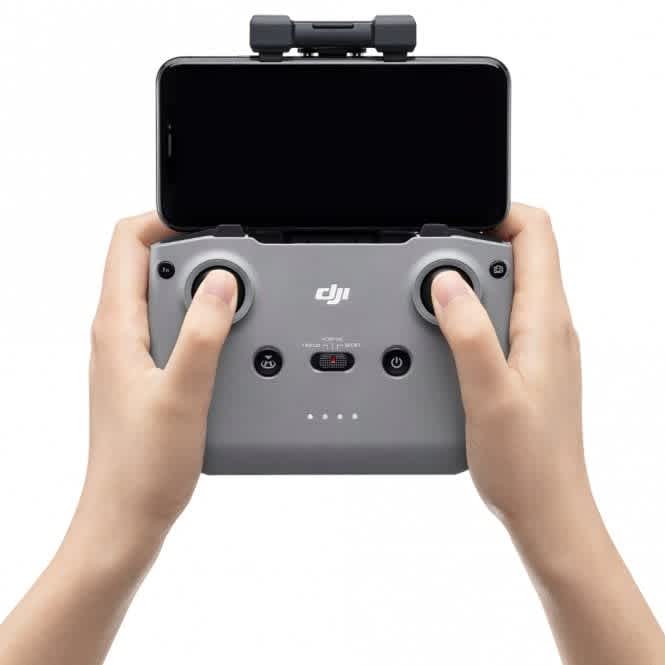
The redesigned controller for the DJI Mavic Air 2.
DJI says that the advantages of the new controller are a prolonged battery life of up to 240 minutes, a more comfortable grip, an improved antenna design, and a more convenient line of sight when looking from screen to drone.
You can also switch between 2.400-2.483 GHz; 5.725-5.850 GHz, just as you can on the Mavic 2 Pro, Mavic 2 Zoom, and the Mavic Air.
To optimise flights, operators can also use the DJI Smart Controller with the DJI Mavic Air 2, Mavic 2 Pro, and Mavic 2 Zoom.
The Smart Controller has a built-in 5.5-inch 1080p screen and an ultra-bright display, even in direct sunlight. In fact, at 1000 cd/m2, the display is approximately 2x as bright as conventional smart device screens.
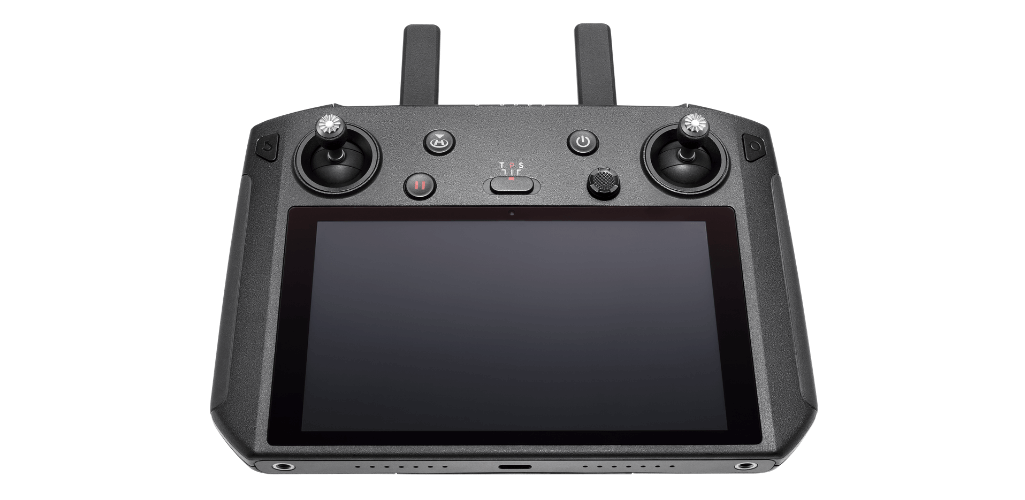
DJI Mavic Air 2 v Mavic 2 v Mavic Mini v Mavic Air – The Verdict
DJI's Mavic series has continually moved into unchartered territory and pushed the limits - from the incredible Mavic 2 series to the teeny-tiny Mavic Mini.
Once again, DJI has delivered with the Mavic Air 2 and showed just how far drone technology has advanced since the original Mavic Air was launched, just over two years ago.
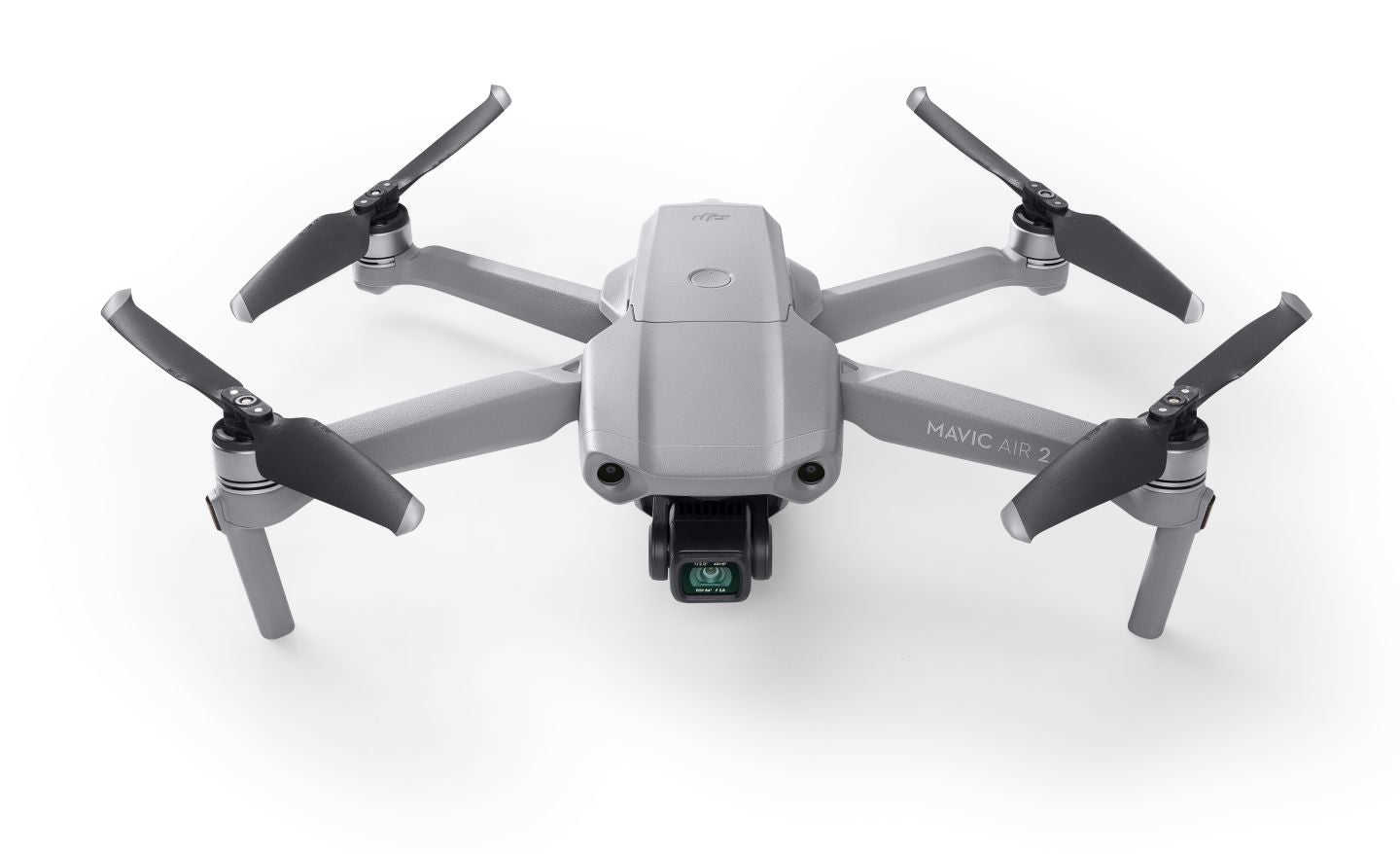
The DJI Mavic Air 2 is a great addition to the Mavic family.
It is an excellent aircraft with some incredible specs, such as the 4K 60fps video and ability to capture 48MP stills. It also benefits from enhanced safety features and an upgraded object tracking system.
Okay, it's not as lightweight as the Mini, and it lacks the omnidirectional sensors and some of the camera capabilities of the Mavic 2 series, but the Mavic Air 2 is an impressive release and should tempt new and existing pilots. It certainly is a welcome addition to the popular Mavic family.
